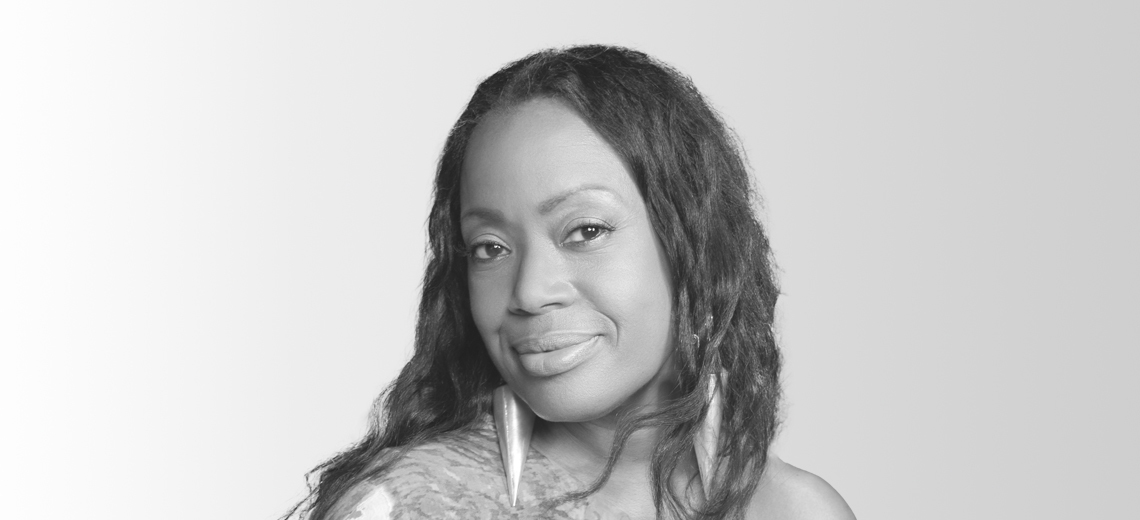This is an episode of the Glossy Fashion Podcast, which features candid conversations about how today’s trends are shaping the future of the fashion industry. More from the series →
Subscribe: Apple Podcasts • Spotify
Based on the way she runs her third fashion label since the 1980s, it’s clear that Tracy Reese has learned from the fashion industry’s mistakes.
Called Hope for Flowers by Tracy Reese, the 5-year-old brand prioritizes responsible design and production, as well as positive social impact in its home city of Detroit. Reese, who formerly led brands Tracy Reese Meridian and Tracy Reese, has, for the first time, chosen to self-fund her brand. Plus, she’s producing fewer collections than the 10 per year she once deemed necessary.
But she’s kept at least one business practice alive: selling through retail partners. “Wholesale is the bigger part of the business,” Reese said on the latest episode of the Glossy Podcast. Currently, Hope for Flowers by Tracy Reese sells through Saks Fifth Avenue, Anthropologie and around 30 specialty stores across the U.S.
On the podcast, Reese also discusses the NYC fashion landscape before e-commerce and the reason designers should avoid chasing trends. Below are highlights from the conversation, which have been lightly edited for clarity.
The fashion community of 1980s NYC
“I went to Parsons School of Design in New York, and that was a great launchpad for my career. And then I was an assistant designer before I launched my own brand for the first time, back in the late ’80s. … That was such a great time to get started in the industry. I came out of Parsons with Marc Jacobs and a few other people who have become well-known — everybody just, like, jumped out and had their own lines. … Everybody was just doing their thing, and there was this spirit of, ‘We can do this,’ and can-do-itiveness in the way we managed, and everybody helped each other. If you had to get your orders shipped, you’d put the word out, and friends would come and help you get your clothes out of the factory. I remember trying to get my clothes into Bergdorf Goodman receiving before they closed at 2:30, and another designer friend of mine met me at the factory, we gathered the full order and ran down the stairs, jumped in two taxis, filled the trunks, and went flying up Eighth Avenue from the Garment Center and across 58th Street to try to get it into receiving before it closed. … And I remember going to UPS on the 30th of the month to get my orders shipped before cancellation dates, and I would see six or seven other designers there, doing the same thing I was doing. You had a hand truck and a bunch of boxes, and we had to fill out bills of lading. None of that stuff happens anymore — everything’s digital. But we were all in it together, and that kept you going.”
The shift to sustainability
“We have to be willing to pay a little more. Something that seems too good to be true usually is — there’s something wrong there. Either the textiles are polluting the planet or there’s abuse on the labor side of things — and then there’s overproduction. In around 2016 and 2017, as I was learning more and more about all of this, I thought to myself, ‘I’m smarter than this. I don’t want to be part of a system that’s abusing the planet and abusing people. And I have to learn how to work differently.’ And it’s not that our old brand was so abusive — we were always in the contemporary [category], so we weren’t trying to sell a dress for $69 or $39. Our dresses were still expensive for most people, but that meant we were able to pay a living wage to our factories. … A lot of textiles have some man-made content that will live forever on the planet, so [with Hope for Flowers] I had to step away from those types of textiles and focus on things that are organic and biodegradable, and that are made from sustainably forested vegetable products or crops. So it’s a huge shift. You’re looking at these more simple textiles, thinking, ‘How do I make these textiles as desirable as what we used to do at Tracy Reese?'”
The perks of owning the business
“I own this thing. And, you know, my partners in my old business were such lovely people, and we really had a very smooth marriage for many years. But then, toward the end, they felt like we should be doing lower-priced, [higher] volume manufacturing, and I felt very differently. So we realized that it was just time to go our own way. And that was cool. And with this business, I’m able to say, ‘OK, I’m not doing 10 collections a year. I’m going to do four or five, at the most, and they’re going to be smaller because I’m self-financing. … I also knew I didn’t want to be working 60 hours a week and on weekends. I’ve been blessed — I’ve had fashion shows and had all of that excitement, and that’s not at the top of my list at the moment. Happy to let that go.”




